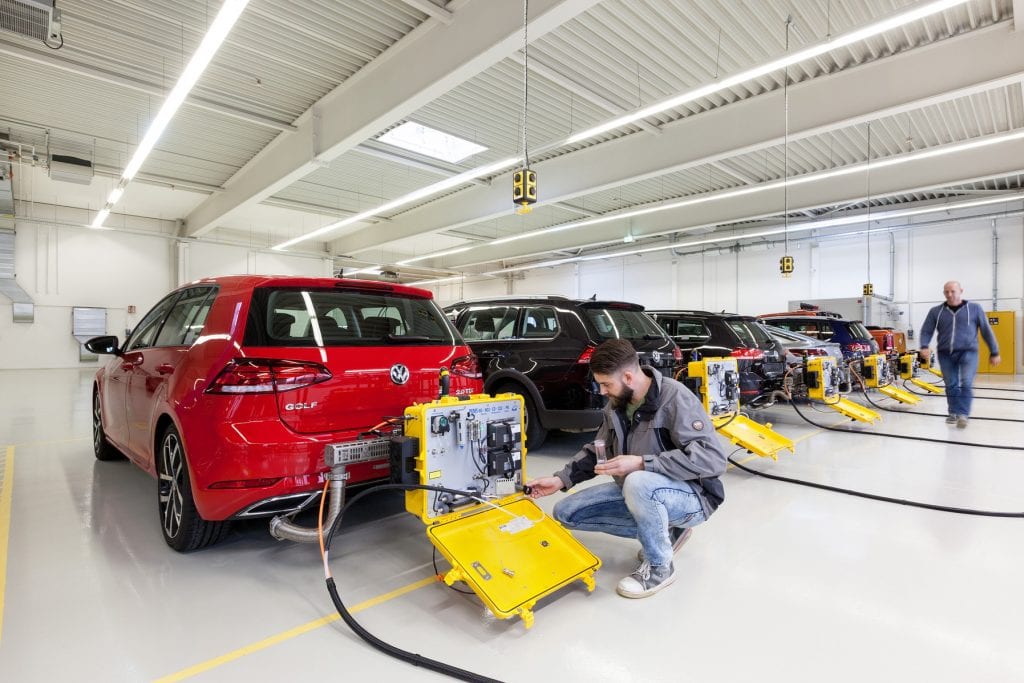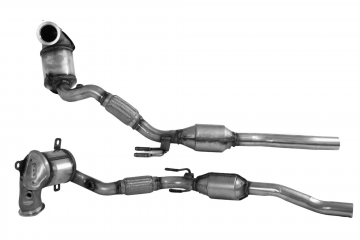
One of the outcomes of the Dieselgate scandal in 2015 was a heightened awareness of vehicle emissions.
Suddenly, the general public was questioning the level of emissions that vehicles put out of their exhausts. More worryingly, various research companies and media outlets conducted their own tests, finding that published emission figures were massively out of touch with the real world.
Old methods
The previous test, the New European Driving Cycle (NEDC) is a laboratory based emissions check. Manufacturers send in a vehicle which is then tested using a rolling road. Emissions output is measured and these are the official figures that follow that model throughout its life.
The NEDC was established in 1980. Back then, there were very few model variants and optional extras, while the world was also not as clued up on vehicle pollution. Today however, we can understand that a vehicle, on a rolling road in a dry, clean and flat warehouse, will not emit anywhere near as much as it would under actual road use.
These tests were also allowing vehicle manufacturers to become compliant with the Euro engine standards. Following Dieselgate, all this needed to change.
New thinking
Therefore, a new and modern test procedure, one that could be adopted globally, was required. Step in the Worldwide Harmonised Light-Vehicle Test Procedure (WLTP), a test that mixes laboratory with real world driving, (RDE).
An RDE test will last between 90 and 120 minutes and take in a mix of ‘normal’ urban, rural and motorway driving.
From 1st September 2017, all vehicles that were undergoing type approval would need to achieve WLTP certification. However, from 1st September 2018, every vehicle on sale must be compliant. Manufacturers have faced a race against time to ensure their entire fleet meets the requirements (more of which will follow).
To complicate matters, carmakers cannot just submit one or two variants for testing. Every single possible platform of a vehicle needs to be tested. For example, if a company has three different sets of alloy wheels as an option, these all need checks. Sat nav? Test all three again with and without it fitted. Bodykits, ECU profiles, seats, climate control – every possible combination needs certification. For some, hundreds of examples of just one model will require testing. This takes time.
The requirements
Adding RDE to the laboratory test means that emissions figures of vehicles will rise, however authorities are allowing for this.
From 2019 until 2020, RDE 1 is in force. This means that cars must meet 2.1 times the amount of emissions from the old NEDC check, no more. Engines to this standard will be known as Euro 6d-TEMP.
From 2020 onwards, (and new registrations from 2021) just a 0.5% margin of error is allowed, so vehicles must almost match laboratory conditions on the road. Engines in this category will be Euro 6d.
Vehicles are measured on the amount of nitrogen oxide (NOx) with laboratory standard set at 80mg/km.
To ensure their cars are compliant, manufacturers are working to get their vehicles Euro 6d-TEMP ready now. This means for some, extra engineering is required.
Challenges ahead
One potential solution for petrol vehicles is the introduction of a particulate filter, much the same as those already prolific on diesel cars. The petrol particulate filter (PPF) will use oxygen to clear particulate matter that builds up, rather than regenerating with heat.
However, adding in the mapping for an engine to clear the filter, as well as ensuring the underneath of a car can house a PPF, means extra engineering. Many vehicle models are already set so production lines and some vehicles will need redesigning – as well as the need for carmakers to source the equipment in the first place.
In addition, there are thousands of unsold vehicles which, after 1stSeptember 2018, cannot be sold as new unless they are retrofitted with new technology.
Manufacturers are therefore being forced to pause production on certain models, slowing down numbers produced while they investigate and re-engineer and ensuring there are fewer uncompliant models unsold after the deadline. Volkswagen is a company that has been vocal about doing this, adding in extra staffing holidays on top if its traditional summer slowdown to achieve this.
There is also the possibility of pre-registration – when a carmaker registers vehicles and sells them on at a slight loss. It is expected that this will cost less than retrofitting, and we will only see whether this road is one travelled when new vehicle registrations for August are released by the SMMT.
Aftermarket impact
Currently, there is little or no effect on the aftermarket. But there will be in the years to come. Firstly, PPFs will become a standard part of the exhaust system, meaning aftermarket suppliers will need to develop their own versions, and garages will need to fit them.
Engine mapping may also need to be checked, and there could be further changes to the MOT to take into account levels on vehicles registered after 1stSeptember 2018.
But whatever comes in the long term, it is important to know what is coming in the automotive industry. Four little letters will have a big impact on the market going forward, but as many will say, it is about time.




You must be logged in to post a comment.